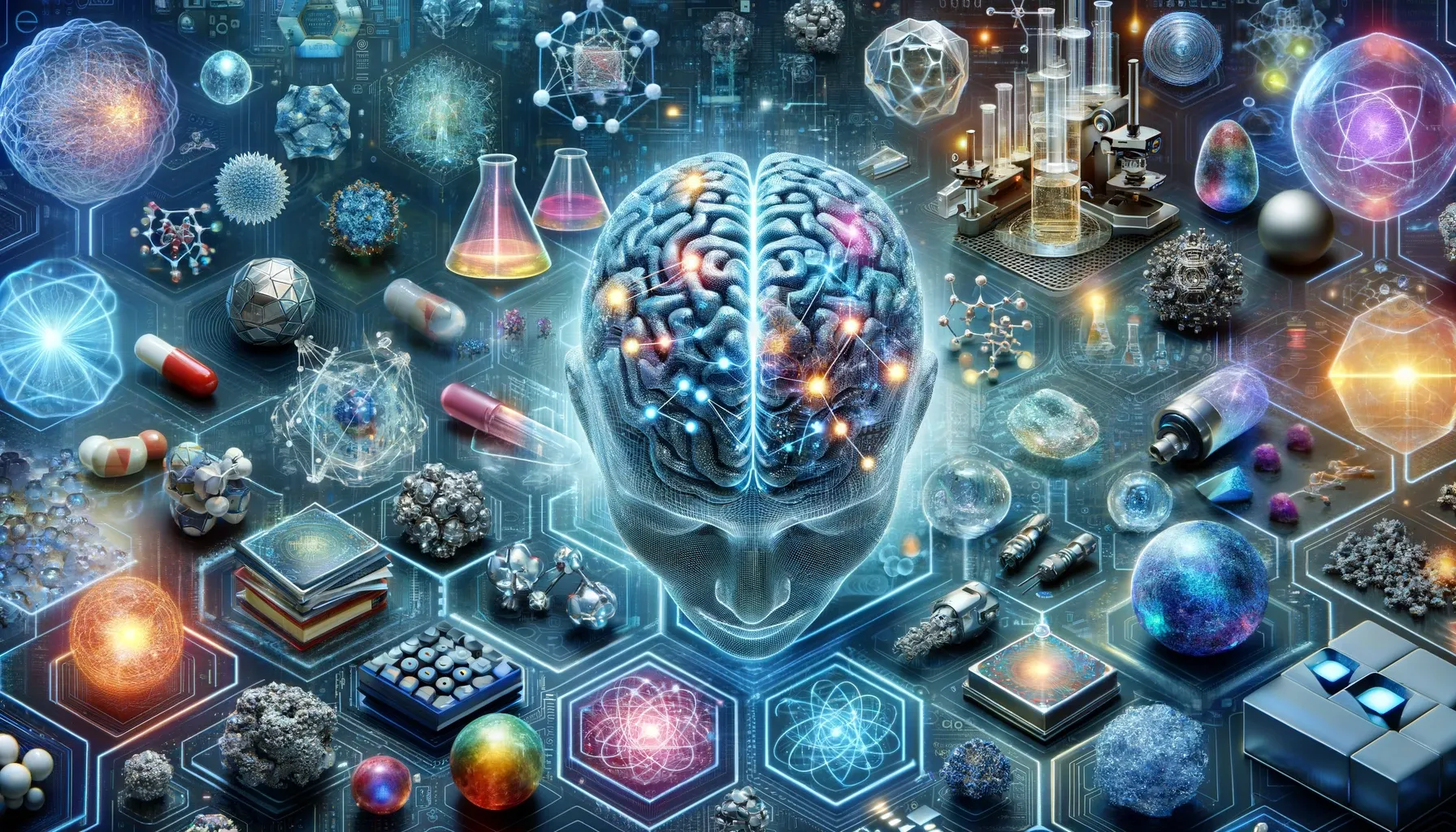The Crystal Ball of AI: DeepMind's Revolutionary Leap in Material Science

In a world where technological advancement often hinges on the discovery of new materials, the pursuit of finding these hidden gems has been akin to seeking needles in a cosmic haystack. However, this quixotic quest is being transformed, thanks to the pioneering efforts of Google DeepMind and its latest artificial intelligence (AI) marvel: GNoME.
GNoME (Graphical Networks for Material Exploration) stands as a testament to the extraordinary potential of AI in revolutionizing scientific discovery. With its recent feat of uncovering 2.2 million crystal structures, GNoME has not just nudged but catapulted the field of material science into a new era. This monumental discovery, detailed in a Nature publication, marks a near-tenfold increase in the number of known stable materials, a leap that would have been unfathomable in the pre-AI era of material science.
The journey of materials discovery has traditionally been a labyrinthine one, characterized by a labor-intensive, time-consuming process of trial and error. But GNoME has rewritten this narrative. Employing deep learning algorithms, it has successfully identified over 380,000 stable and technologically viable materials, which could underpin future innovations in everything from superconductors to next-generation batteries and electric vehicles. This breakthrough underscores not just a quantitative leap but a qualitative transformation in how we approach material discovery.
GNoME’s methodology is an elegant symphony of AI and scientific intuition. It harnesses two deep-learning models: one that tweaks elements in existing materials to generate over a billion structures, and another that predicts the stability of new materials based purely on their chemical formulas. This dual approach allows GNoME to traverse the vast landscape of possibilities with a precision and speed that was once the stuff of science fiction.
But it’s not just about quantity. The precision of GNoME’s predictions, initially around 5% but quickly escalating to over 80% through iterative learning, marks a significant advance in the AI’s ability to discern the wheat from the chaff in the realm of material stability. This efficiency is a game-changer, dramatically reducing the computational cost and resources required for such discoveries.
The impact of GNoME extends beyond the virtual confines of its algorithmic world. Researchers at the University of California, Berkeley, and the Lawrence Berkeley National Laboratory, leveraging GNoME’s findings, have synthesized 41 novel compounds with a remarkable success rate of over 70%. This tangible success in the laboratory is a resounding validation of GNoME’s predictions and a beacon for the future of AI-driven material synthesis.
The implications of this breakthrough are profound. In an age where the clarion call for sustainable technologies is becoming increasingly urgent, the discovery of new materials is not just a scientific triumph but an imperative for our collective future. The potential to develop better batteries for electric vehicles or more efficient superconductors for computing could be instrumental in our quest for a greener, more sustainable world.
This endeavor also epitomizes the collaborative spirit of scientific advancement. By making GNoME’s database of newly discovered crystals publicly available, DeepMind has thrown open the doors to a global community of researchers. This democratization of data not only accelerates the pace of discovery but also embodies a collective approach to tackling some of the most pressing challenges of our time.
As we stand on the cusp of this new era in material science, it is evident that AI is no longer just a tool in the scientist’s arsenal – it is a catalyst for a paradigm shift. The efficiency and scale of GNoME’s achievements herald a new age where AI-driven discoveries could become the norm rather than the exception.
Moreover, the success of GNoME is a harbinger of the broader potential of AI in scientific research. Just as AlphaFold revolutionized the field of biology by predicting protein structures, GNoME is charting a similar transformative course in material science. This convergence of AI and scientific inquiry is not just enhancing our understanding of the world but also redefining the boundaries of what is possible.
In a broader context, GNoME’s achievement is a reflection of our evolving relationship with technology. It signifies a shift from viewing AI as a mere computational tool to recognizing its role as a partner in creative scientific exploration. This partnership, where human insight and AI’s computational prowess work in tandem, could be the key to unlocking mysteries across various scientific domains.
The road ahead is as exciting as it is uncharted. As we harness the power of AI in material science, we stand at the threshold of untold possibilities. The materials discovered by GNoME could be the building blocks of technologies yet to be imagined, shaping a future that is as sustainable as it is technologically advanced.
In this journey, the role of initiatives like the Materials Project and Berkeley Lab’s A-Lab is pivotal. By integrating robotics with machine learning, these platforms are not just synthesizing new materials but also optimizing the development process. This synergy between AI and autonomous laboratories could accelerate the pace of material discovery and application, opening up new frontiers in technology and sustainability.
As the GNoME project continues to evolve and expand, its implications reach far and wide. This AI-driven approach to material science not only promises to enhance our ability to innovate and create but also offers a glimpse into a future where AI and human ingenuity collaborate to solve some of the world’s most complex challenges. With each discovery, we inch closer to a world where sustainable and efficient technologies are not just aspirations but realities, shaped by the boundless potential of AI and human creativity. In this new era, GNoME stands as a beacon of hope and a symbol of the boundless possibilities that await us.